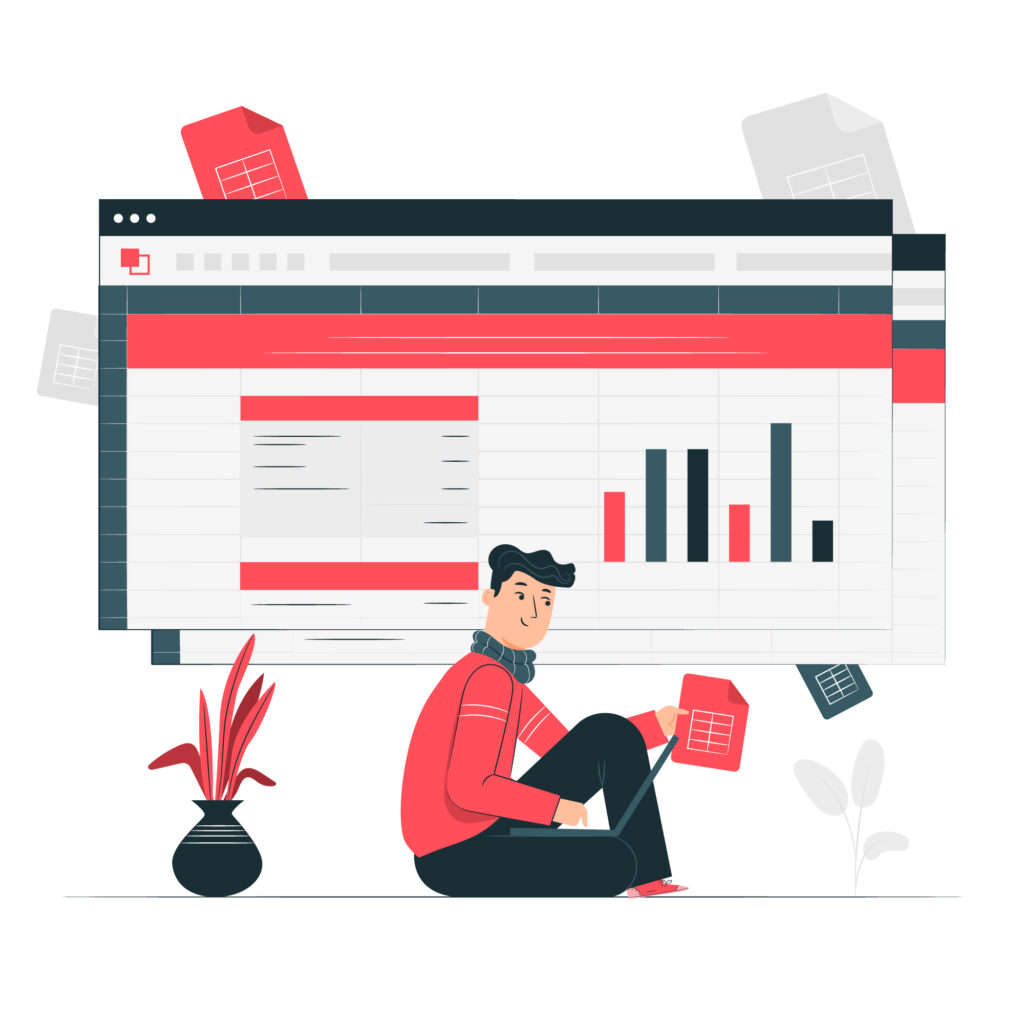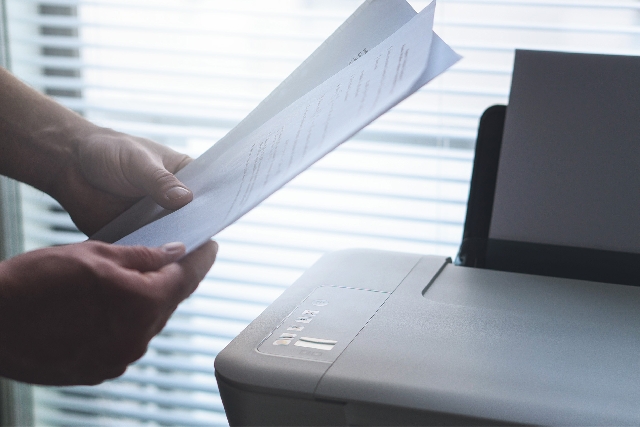A balance sheet is one of the most important financial documents of a business because it allows the owner or shareholders of the company to know the exact current financial condition of the business. A balance sheet has two formats: old and new. The old format is known as T shaped balance sheet and it has two sides. On the other hand, the new format balance sheet is known as a vertical format balance sheet and it has one side. In the new format, equities and liabilities are listed at the top and the assets are listed at the bottom.
Key Takeaways
- A balance sheet works as a snapshot of the financial condition of a company
- There are four main types of balance sheets available: Classified Balance Sheet, Common Size Balance Sheet, Comparative Balance Sheet, Vertical Balance Sheet, etc.
- From the balance sheet, you can find various ratios like debt-to-equity ratio, acid-test ratio, etc.
- The main equation of the balance sheet is: “Assets = Liabilities + Shareholders’ Equity”
What is a Balance Sheet?
According to Wikipedia –
“In financial accounting, a balance sheet is a summary of the financial balances of an individual or organization, whether it be a sole proprietorship, a business partnership, a corporation, a private limited company, or other organization such as government or not-for-profit entity. Assets, liabilities, and ownership equity are listed as of a specific date, such as the end of its financial year.”
A balance sheet is also known as the statement of financial position, and it works as a snapshot of the financial condition of a company. With the help of a balance sheet, the owner or the shareholders can easily calculate the ROI and evaluate the financial structure of the company.
Types of Balance Sheet
There are four main types of balance sheets available. They are –
- Classified Balance Sheet: This type of balance sheet provides quite a few types of information about a company including assets, liabilities, equity, etc. Usually, this information is listed as subcategories in the sheet. With this type of balance sheet, you can easily combine hundreds of individual accounts into a format.
- Common Size Balance Sheet: This type of balance sheet contains all the common information and a column that notes the same information as a percentage of the company’s total assets. With this type of balance sheet, you can easily identify if there is any change in any particular account.
- Comparative Balance Sheet: In this type of balance sheet, you will see all the information side-by-side. Here the information is listed from multiple points in time. You will find information on assets, liabilities, and shareholders’ equity from this type of balance sheet.
- Vertical Balance Sheet: This is the newest type of balance sheet format where you will see a single column of numbers. Here, the assets are listed first, then liability line items and at the end, you will see the shareholders’ equity line items. In this type of balance sheet, all the information is listed in decreasing order of liquidity.

How does a Balance Sheet Work?
If you want to know the current financial condition of a company then the balance sheet is the right place to start. From the balance sheet, you can derive quite a few ratios like debt-to-equity ratio, acid-test ratio, and many more. You can also get the income statement and statement of cash flows from the balance sheet. The main equation of the balance sheet is –
“Assets = Liabilities + Shareholders’ Equity”
Here, assets represent the total valuable things that the company owns. On the other hand, liabilities indicate what the company owns to other parties like creditors, suppliers, tax authorities, etc. On the other hand, the equity represents the total funds that the shareholders contributed to the company. So, a balance sheet must include the below entities –
| Assets | Liabilities | Equity | |
| Current assets | Non-current assets | ||
| Accounts receivable Cash and cash equivalents Inventories Cash at a bank, Petty Cash, Cash On Hand Prepaid expenses for future services Revenue Earned In Arrears Loan To (Less than one financial period) | Property, plant, and equipment Investment property Intangible assets, such as patents, copyrights, and goodwill Financial assets such as notes and receivables Investments accounted for using the equity method Biological assets Loan To (More than one financial period) | Accounts payable Provisions for warranties or court decisions Financial liabilities such as promissory notes and corporate bonds Liabilities and assets for the current tax Deferred tax liabilities Unearned revenue Interests on loan stock Creditors equity | Shareholder equity Retained earnings Preferred stock Non-controlling interest in equity |
Structural Difference between New and Old Balance Sheet
Old Balance Sheet Structure
| Company Name: | |||||
| Balance Sheet | |||||
| For the Period Ended: | |||||
| Liabilities | Amount in USD | Amount in USD | Assets | Amount in USD | Amount in USD |
| Capital And Reserves | Fixed Assets | ||||
| Opening Capital Balance | XXXX | Land | XXXX | ||
| Reserves and Surplus | XXX | Less: Depreciation | XX | XXXX | |
| Less: Drawings | XXX | ||||
| Capital Balance | XXXX | Building | XXXX | ||
| Less: Depreciation | XX | XXXX | |||
| Secured Loans | |||||
| Long term debt | XXX | Investments | |||
| Other long-term liabilities | XXX | Long term Investments | XXX | ||
| Unsecured Loans | Current Assets, Loans, and Advances | ||||
| Cash credit payable | XXX | Inventory | XXX | ||
| Cash and cash equivalents | XXX | ||||
| Current Liabilities | Other current assets | XXX | |||
| Trade Payables | XXX | ||||
| Accrued Interest | XXX | Prepaid expenses | XX | ||
| Other Current Liabilities | XXX | Miscellaneous expenditure | XX | ||
| Total Liabilities | XXXX | Total Assets | XXXX |
New Balance Sheet Structure
| Company Name: | |||
| Balance Sheet as at: | |||
| Particulars | Note No. | Figures as at the end of a current reporting period | Figures as at the end of the previous reporting period |
| Equity And Liabilities | |||
| 1) Shareholder’s Funds (a) Share Capital (b) Reserves and Surplus (c) Money received against share warrants | |||
| (2) Share application money pending allotment | |||
| (3) Non-Current Liabilities (a) Long-term borrowings (b) Deferred tax liabilities (Net) (c) Other Long term liabilities (d) Long-term provisions | |||
| (4) Current Liabilities (a) Short-term borrowings (b) Trade payables (c) Other current liabilities (d) Short-term provisions | |||
| Total | |||
| Assets | |||
| (1) Non-current assets (a) Fixed assets (i) Tangible assets (ii) Intangible assets (iii) Capital work-in-progress (iv) Intangible assets under development (b) Non-current investments (c) Deferred tax assets (net) (d) Long-term loans and advances (e) Other non-current assets | |||
| (2) Current assets (a) Current investments (b) Inventories (c) Trade receivables (d) Cash and cash equivalents (e) Short-term loans and advances (f) Other current assets | |||
| Total |
Key Differences between Old and New Balance Sheet Format
| Old Balance Sheet | New Balance Sheet |
| An old balance sheet is known as T shaped balance sheet | The new balance sheet is known as a vertical format balance sheet |
| Information is presented side by side | Information is presented from top to bottom |
| This type of balance sheet has two sides | The new balance sheet has only one side |
| The left column shows Liabilities and the right column shows assets | Here, all information is listed in one column, first the liabilities and then the assets |
| The information for the current year is only included | Two years of information are included: current and previous year |
| You can’t compare the data of the current year to the previous year | You can easily compare the data of the current year with the previous year |
FAQs about What is the Difference between a New and Old Balance Sheet
What are the two types of balance sheet format?
The two types of balance sheet formats are horizontal and vertical. The horizontal balance sheet format has two columns and it is known as the old balance sheet format. On the other hand, the vertical balance sheet format has one column and it is known as the new balance sheet format.
What is the difference between a balance and an income sheet?
A balance sheet conations data on assets, liabilities, and equity. On the other hand, an income statement contains data on revenues and expenses as well as the profit/loss. Moreover, the balance sheet contains any unpaid tax liabilities while the income statement includes the tax expenses.
What are the three main things found on a balance sheet?
In a balance sheet, you will find the assets, liabilities, and equity of a company.
What is the new name for the balance sheet?
The new name for a balance sheet is Statement of Financial Position.
References:
https://brainly.in/question/5881502
https://www.iedunote.com/balance-sheet
https://cleartax.in/s/balance-sheet
Last Updated on November 5, 2022 by Magalie D.





